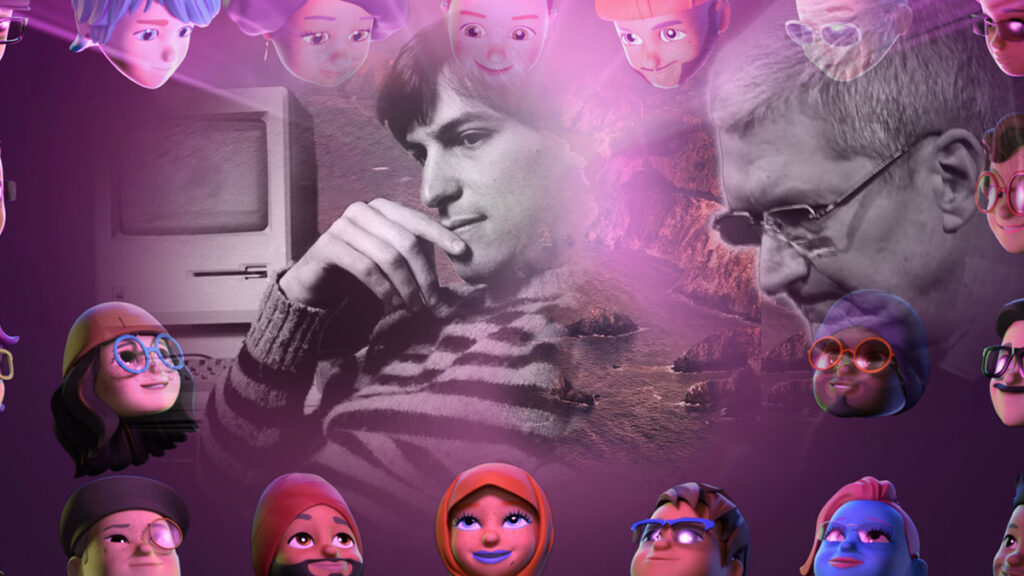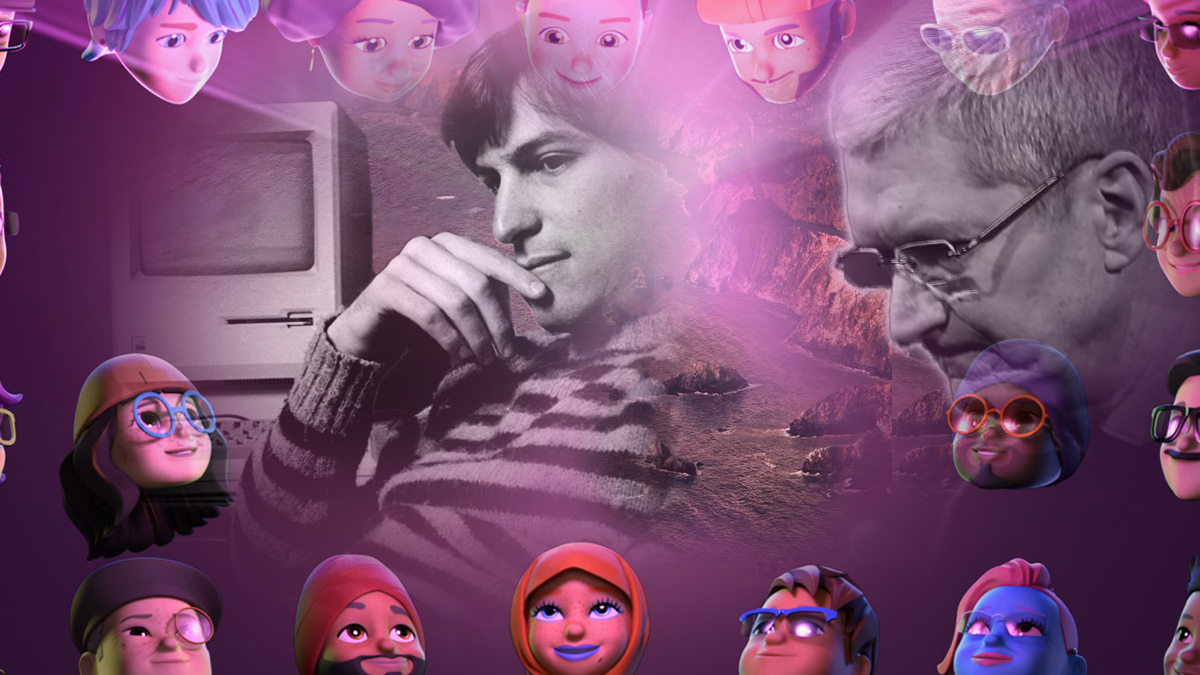
Apple’s innovation is not waning, it’s just getting started
Often the simplest ideas are the most powerful, and sometimes, the most popular idea is just plain wrong. But it can take decades to realize which is the better path. Take the outdated and barely-still-remembered rivalry between Windows / PCs and Apple.
Microsoft and Bill Gates were touted as being genius for seeing that the market for software, in the case of windows, system software, separate from hardware, and the associated costs and effort to build it, was an unnecessary burden.
Now Google / android uses the same playbook, allowing a variety of hardware makers to build that hardware around the freely available software.
The “genius” of this was simply put, money. Not just getting paid to build software ( or in the case of android finding hidden ways to monetize system control) but the “brilliant” concept of creating code only and then selling it infinitely with not cost of manufacture.
In 2021, 2022 and beyond Apple will prove, definitively, that this idea, far from brilliant or genius, was simply short sighted and wrong. As most ideas are that are based on greed alone.
Greed, plus a lack of a drive to innovate, but rather being satisfied to stagnate creatively as long as the bottom line is satisfied, turns out to be a failure of monumental proportions.
It can even be argued that virtually all massive tech firms would not exist without apple innovation.
Though a subject for another article, this belief that greed as a business model could be genius and is superior to the old fashioned idea that creating a “whole widget” was, ultimately, better will eventually die across the board (Hello facebook and google search).
Apple is doubling down, with the M1 and soon M2 chips and in the end through creating a better product will also win in the marketplace, bigly.
Apple, in contrast to MS and Android, has never charged for system software. Every year, like clockwork the various systems; macOS, iOs, iPad OS, watchOS, tvOS and now, soon, homeOS (rumor) are all upgraded, sometimes in a major way.
Starting on Monday June 7th, 2021 and running until the 11th, WWDC2021 went into great detail regarding just what the completely free updates hold in store.
Example: iPhone influence has barely started to have its impact felt
Even if you don’t accept the fact that android devices are knock-offs of the iPhone or that Windows was literally plagiarized from early versions of the Mac system (and the pending law suit to that effect was settled by Microsoft in 1997, out of court for peanuts, ironically saving Apple from bankruptcy) the influence of the iPhone since its initial appearance in 2007 has been immense.
As big as the impact has been until now, the facts point to this influence having barely begun. There are entire categories of communication and interaction that could not be imagined without a world of iPhone owners out there learning about and using each new upgrade and improvement.
Nearly all of social media, but especially apps like TikTok rely not only on the high end features of the iPhone but even more so on the growing sophistication of the user base, and the desire to get more and more out of the potential that Apple has unleashed in order to express themselves more fully and communicate with each other more successfully.
Indeed, it is that idea of making the whole widget that is beginning to take this unending progression toward more and more quality and features to a whole new level.
And this is happening across consumer level and semi-pro to pro simultaneously. Try to imagine how another company would try to monetize each small software feature – such as the new “center stage” feature that was just rolled out the the iPad pro.
This feature, while it is, in some respects, designed to boost sales for the new iPad Pro, is also one that uses machine learning, the power of the new faster 8 core cpu on the M1 chip (75x faster) and the upgraded system to give the millions that are now communicating via video, and in particular a self-facing camera to publish to YouTube and TikTok.
More than the whole widget
By following the path first laid out by Steve Jobs when he held fast, against all odds at the time, to the belief that the only path toward real progress and innovation will always lie in the power of being able to create, design and control the “whole widget”.
This concept has not only not been abandoned or watered down by Apple under Tim Cook but with the new Apple Silicon and the massive dividends that are emerging out of the deep integration between software and various hardware enhancements (machine learning , AI and the intersection of the hardware and software that power them) it is becoming all encompassing.
After decades to being characterized as wrong about the necessity of this approach for any real innovation, the fruits of Steve Job’s vision have only just barely begun to grow.
User adaptation is bigger than technical progress and will become even more important in the future
The way we live and work has already been changed massively and rapidly, and that change accelerated after 2007 and the iPhone.
Now there is talk of living in a metaverse which at a “stone-age” level people already do. It is Apple that is pointing the way, in terms of building the tools to make this possible and a more expansive reality, more than any other company or entity.
The shift to some kind of metaverse is one that would have far reaching and almost incomprehensible meaning for nearly the entire globe. It also, perhaps not coincidentally, comes at a time when the very existence of humanity on the planet is being treatened.
While many could see it as a diversion or escape from a dying, depressing reality, Steve Job’s vision and belief was building tools for human beings.
“When we invented the personal computer, we created a new kind of bicycle…a new man-machine partnership…a new generation of entrepreneurs.” — Steve Jobs, c. 1980
New jobs and new lifestyles to reach a new ideal for humanity
This original vision has never changed but only become all pervasive in the Apple path of innovation.
As the importance of global networked communication grows exponentially, Apple is at the forefront of building the tools to make that communication more accessible to people everywhere.
Ultimately it is the human interface, that technology must adapt to and mirror, not the other way around.
The increasing complexity of the process of building the “bicycle of the mind” derives its importance from the need to make the role of the human being ever simpler and more intuitive.
Having the creation of appropriate tools for enjoyable and more expansive human communication as the end goal of all, rather than the bottom line of greed and pride over charging as much as possible while delivering as little as possible, is turning out, in the end to be more than just a more successful business strategy, it is a strategy that may be a part of the last hopes for our planet.
Utopia or Oblivion
Few would argue, unless working for the fossil fuel industry, that sustainable energy solutions are essential to reverse global warming and the ever expanding climate threats we face.
Soil regeneration, solar power, sustainable energy transportation systems, these are all the future of our technology if we are to survive as a species.
But what about the internet, the idea of the metaverse and the potential social, political and educational that could come from more evolved, more intuitive and more powerful communication systems, systems that trace back to the first personal computing devices and the first networks. Do they have a role to play?
While Apple has pursued innovation and Steve Jobs vision of the whole widget for business reasons and as a part of a belief in building tools, being a major force for a potential path toward a more utopian world, rather than part of the lemming-like decent to oblivion, is surely one that Steve Jobs would approve of, if we were able to ask him what his thoughts are today.
- Apple Reveals new MacBook Pro Models, Mac Mini: all with M2 and M2 Pro Chips
- Fitness with Apple Watch: A Day in the Life of Highly Motivated Ring Closers
- The Vision of Steve Jobs for the Future of Apple has Barely Begun to Emerge
- Best thing about the new Mac Studio Display? It’s Optional with the Mac Studio Desktop…
- iPhone Subscription Service Could Launch This Year according to Gurman
Find books on Music, Movies & Entertainment and many other topics at our sister site: Cherrybooks on Bookshop.org
Enjoy Lynxotic at Apple News on your iPhone, iPad or Mac.
Lynxotic may receive a small commission based on any purchases made by following links from this page
